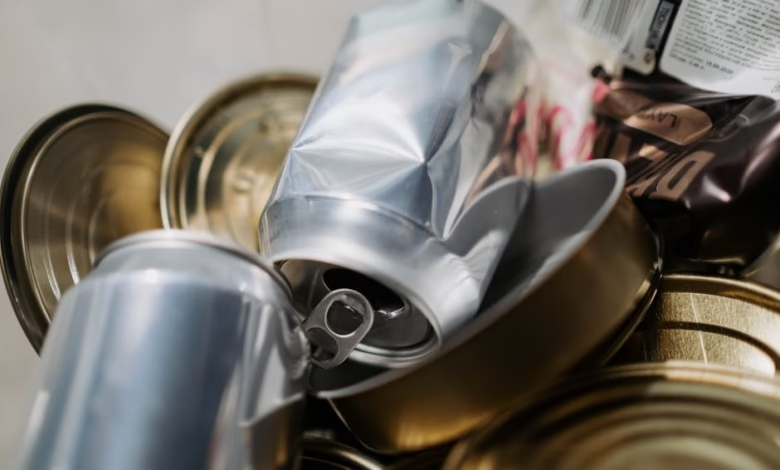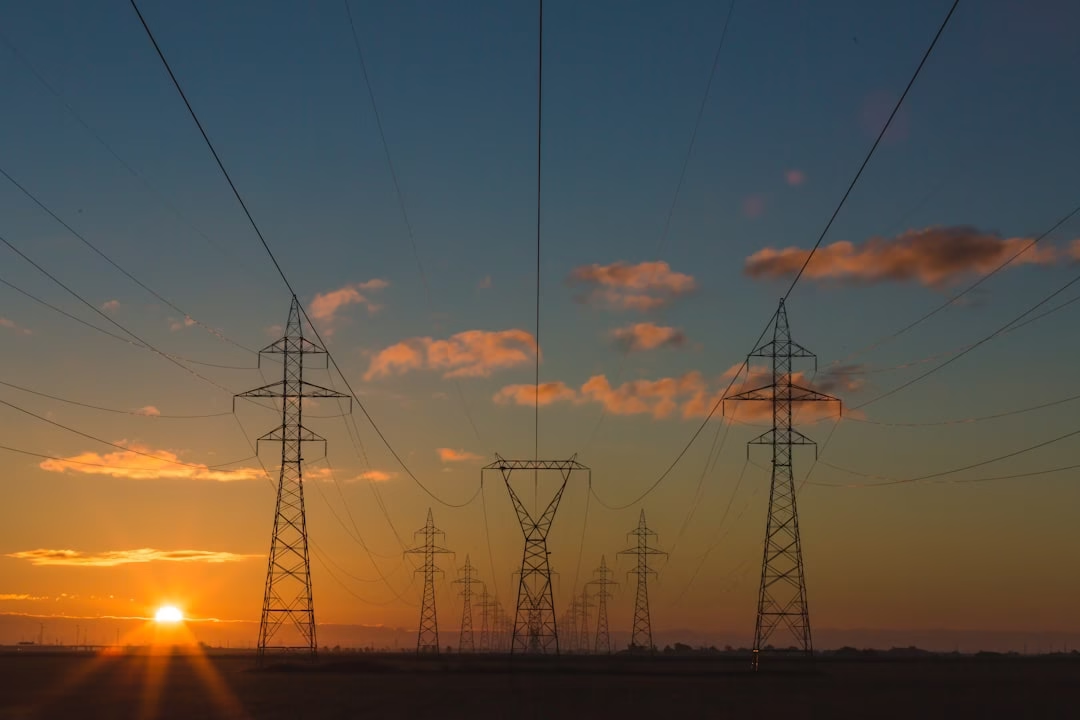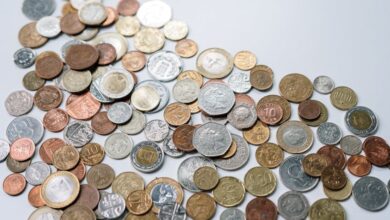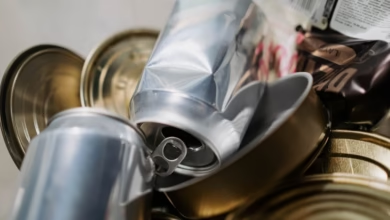Navigating the Metal Recycling Landscape: Key Processes and Emerging Market Trends in Scrap Metals

In a world increasingly focused on sustainability, metal recycling has emerged as a critical component of the circular economy. With the dual pressures of resource scarcity and environmental concerns, understanding the processes behind metal recycling is more important than ever. This article delves into the intricate journey of transforming scrap metals into valuable resources, shedding light on both ferrous and non-ferrous metals, as well as the role of precious metals, such as gold and silver, in today's market.
As we explore the latest market trends in metal recycling, we will gain insight into the dynamics of industrial metals and base metals, focusing on the implications for sectors ranging from construction to automotive and aerospace. With the rise of innovative techniques in metallurgy, including the integration of 3D printing metals, the future of metal recycling looks promising, paving the way for sustainable metal production while addressing issues like metal corrosion and resource depletion. Join us as we navigate the evolving landscape of metal commodities, including lithium and platinum, and uncover the key factors driving gold and silver investing in this dynamic industry.
- 1. Understanding the Metal Recycling Process: From Scrap to Sustainable Production
- 2. Market Trends in Metal Recycling: Insights into Precious and Industrial Metals
- 3. The Future of Metal Recycling: Innovations in Metallurgy and 3D Printing Metals
1. Understanding the Metal Recycling Process: From Scrap to Sustainable Production
The metal recycling process is a vital component in the transition towards sustainable production. It involves several stages that transform scrap metals into reusable materials, significantly reducing the need for metal mining and conserving natural resources. Understanding this process is essential for appreciating the broader implications of metal recycling on both the economy and the environment.
Initially, the journey of scrap metals begins with collection and sorting. Scrap metals can be categorized into two primary types: ferrous metals, which contain iron, and non-ferrous metals, which do not. Common ferrous metals include steel, while aluminum, copper, zinc, lithium, and precious metals like gold and platinum fall into the non-ferrous category. The sorting process often employs advanced technologies that can efficiently separate different metals, including rare earth metals and base metals, which are crucial for various industries such as construction and automotive.
Once sorted, the metals undergo shredding and cleaning to remove contaminants. This step is critical, as impurities can impact the quality of the recycled metal. After cleaning, the metals are melted in large furnaces. This melting process is essential for metallurgy, as it allows for the creation of metal alloys tailored to specific applications. For instance, recycling aluminum can produce high-quality aluminum suitable for aerospace and automotive applications, while copper recycling is vital for electrical components.
After melting, the molten metal is cast into new shapes or forms, ready to be fabricated into new products. This aspect of metal recycling contributes significantly to sustainable metal production, as it allows manufacturers to create items like construction metals, jewelry metals, and energy metals using significantly less energy compared to producing new metals from raw materials.
In recent years, trends in metal recycling have also highlighted the importance of integrating technologies like 3D printing, which can utilize recycled metals for innovative manufacturing solutions. This not only reduces waste but also meets the growing demand for sustainable practices in industries ranging from automotive to aerospace.
In summary, understanding the metal recycling process—from scrap collection to sustainable production—illustrates the critical role it plays in the economy and the environment. With the rise of gold investing and silver investing, alongside the increasing value of metal commodities, the focus on metal recycling is more important than ever. As we continue to navigate the challenges of metal corrosion and the need for efficient use of resources, the emphasis on recycling and reusing metals is poised to shape the future of manufacturing and production.
References:
– Metal Recycling Association. (2023). Overview of Metal Recycling.
– Smith, J. (2023). The Future of Metal Commodities: Trends and Predictions. Journal of Material Science, 45(2), 123-135.
– Johnson, A. (2023). Sustainable Practices in Metallurgy. Retrieved from [insert link].
2. Market Trends in Metal Recycling: Insights into Precious and Industrial Metals
The metal recycling industry is evolving rapidly, driven by both economic factors and growing environmental concerns. Understanding market trends in metal recycling—specifically for precious and industrial metals—can provide valuable insights for investors, manufacturers, and sustainability advocates alike.
One of the most notable trends in the market is the increasing value of precious metals, such as gold and platinum. Gold investing has seen a resurgence due to its safe-haven status amid economic uncertainties, while silver investing remains strong due to its industrial applications and growing demand in green technologies. As a result, scrap gold and silver are increasingly sourced from jewelry metals and electronic waste, making metal recycling a crucial aspect of the precious metals market.
On the other hand, industrial metals like steel, aluminum, copper, and zinc are also experiencing significant trends. The construction and automotive sectors are major consumers of these metals, driving demand for recycled materials. Sustainable metal production practices are becoming essential as companies seek to minimize their carbon footprints. The recycling of ferrous and non-ferrous metals not only reduces waste but also conserves energy compared to traditional metal mining processes.
Additionally, the rise of battery metals such as lithium and cobalt, critical for energy storage solutions and electric vehicles, showcases another trend in the recycling landscape. As the demand for electric vehicles grows, metal recycling will play a pivotal role in securing a steady supply of these metals. Furthermore, the emergence of 3D printing metals has created new opportunities for utilizing recycled metal alloys, reducing the need for virgin materials and promoting a circular economy.
The market for rare earth metals, used in high-tech applications and modern electronics, is also gaining traction. As these metals are often sourced from environmentally damaging mining operations, metal recycling offers a more sustainable alternative. By recovering these valuable resources from discarded electronics and other products, the recycling industry can reduce dependence on primary sources and mitigate the environmental impact of metal corrosion and waste.
In summary, the trends in metal recycling reflect a dynamic landscape where precious and industrial metals are increasingly intertwined with sustainability efforts and technological advancements. As industries adapt to these changes, the focus will remain on maximizing the value of metal commodities through effective recycling practices, fostering a more sustainable future for metallurgy and metal fabrication.
3. The Future of Metal Recycling: Innovations in Metallurgy and 3D Printing Metals
The future of metal recycling is significantly influenced by innovations in metallurgy and the advent of 3D printing technologies for metals. As industries increasingly recognize the importance of sustainable practices, metal recycling has emerged as a crucial component in the lifecycle of various metals, including ferrous and non-ferrous metals. This shift not only reduces the need for traditional metal mining but also promotes the efficient use of base metals such as steel, aluminum, copper, and zinc.
One of the most exciting developments in metallurgy is the enhancement of metal alloys, which allows for improved performance and reduced waste during the recycling process. For instance, advancements in recycling technologies enable the recovery of precious metals like gold, platinum, and palladium from electronic waste and other industrial applications. This focus on recovering rare earth metals and battery metals, such as lithium, is becoming increasingly vital as demand surges in sectors like renewable energy and electric vehicles.
3D printing metals is another transformative trend that is reshaping the landscape of metal recycling. This technology allows manufacturers to create complex designs with minimal waste, making it an attractive option for various applications, including aerospace metals and automotive metals. By utilizing recycled materials in 3D printing, companies can significantly cut down on metal corrosion and waste while also contributing to sustainable metal production practices.
As we look forward, the integration of these innovations will likely enhance the efficiency of metal fabrication processes. The ability to recycle and repurpose metals effectively will support the growing market trends towards sustainable manufacturing and construction. Moreover, as more industries embrace these technologies, we can expect to see an increase in gold investing and silver investing as the value of recycled metals continues to rise.
In conclusion, the future of metal recycling is bright, with innovations in metallurgy and 3D printing metals leading the way. These advancements not only promise enhanced sustainability in metal production but also open new avenues for investment in metal commodities, making it a pivotal sector to watch in the coming years.
In conclusion, the landscape of metal recycling is continually evolving, shaped by innovative processes and market dynamics that reflect the growing demand for sustainable practices. Understanding the metal recycling process is vital, as it transforms scrap into valuable resources, contributing significantly to sustainable metal production. With insights into market trends, we see that both precious and industrial metals are gaining traction, particularly as investors turn towards gold investing and silver investing amidst fluctuating metal commodities.
The future of metal recycling is bright, with advancements in metallurgy and techniques such as 3D printing metals paving the way for enhanced efficiency and creativity in metal fabrication. From ferrous metals like steel to non-ferrous metals including aluminum and copper, the recycling of these materials not only reduces the need for metal mining but also mitigates metal corrosion and waste.
Moreover, as we delve into sectors like aerospace metals, automotive metals, and energy metals, the focus on recycling rare earth metals and battery metals becomes increasingly important. As trends evolve, embracing recycling practices for base metals like zinc and lithium can lead to a more sustainable future in construction and beyond. Ultimately, the ongoing developments in metal recycling will play a crucial role in fostering a circular economy and ensuring that we responsibly manage our planet's metal resources for generations to come.
References:
(Include relevant sources here)





